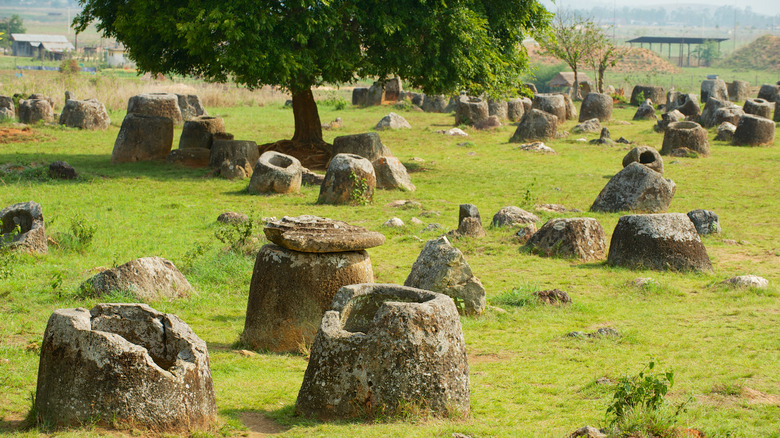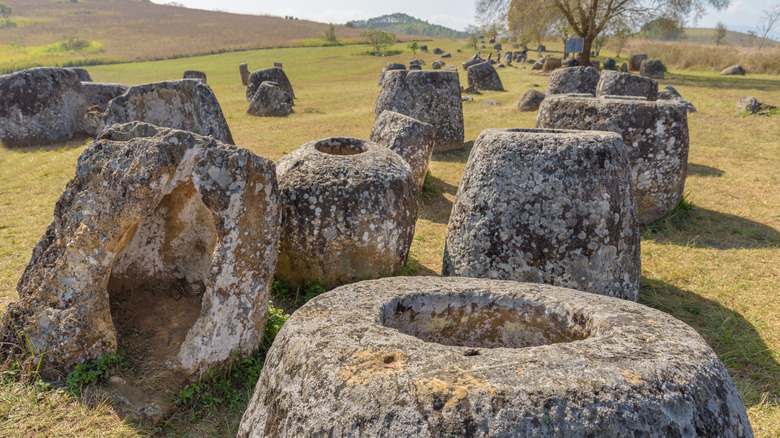Why The Mystery Of The Plain Of Jars Remains Unsolved
Travelers who brave the winding mountain roads in a quiet corner of Laos will come across a field of ancient stone jars that puzzle archeologists now just as much as they did when they were discovered. According to BBC, despite the mystique and wonder surrounding the Plain of Jars, it's not a popular tourist destination and often goes overlooked, just as Laos is overlooked by tourists in favor of its neighbors Thailand and Vietnam.
The stone urns number in the thousands and date all the way back to the Iron Age. They're scattered seemingly at random over a huge area in the remote valley, near the town of Phonsavan but a few hundred miles away from the capital Vientiane. The jars vary in shape and size, with some nearly 10 feet tall and over 3 feet wide, and can weigh several tons. The presence of bones and lids nearby has led to a few believable theories, yet despite the scope of this ancient site, no one is quite sure why these jars were built, and even the people who made them are shrouded in mystery as they have been for millennia.
The jars factor into Laotian mythology
According to Atlas Obscura, the urns could be as much as 2,000 years old and each can weigh up to 14 tons. The most prominent theories center around death, given that human bones were found in the area. Many believe the urns to be burial jars or used in funeral rites, while others believe they were simply used as food storage. Local Laotian mythology states that jars were used to brew rice wine in celebration of a victory by a legendary king of giants.
The jars only received western attention in the 1930s, when French archaeologist Madeleine Colani visited the site. It was said the site was used to house jewelry and axes along with other valuables, but everything had been heavily looted by the time she arrived. The Plain of Jars is not the only cluster of these mysterious ancient vessels, as small groups can be found tracing a path all the way to India, suggesting they could be connected to some ancient trade route.
Unfortunately, there is something else that litters the Plain of Jars: bombs. Unexploded bombs from the Secret War of the 1960s make this not only one of the most mysterious ancient sites in the world, but also one of the most dangerous.

